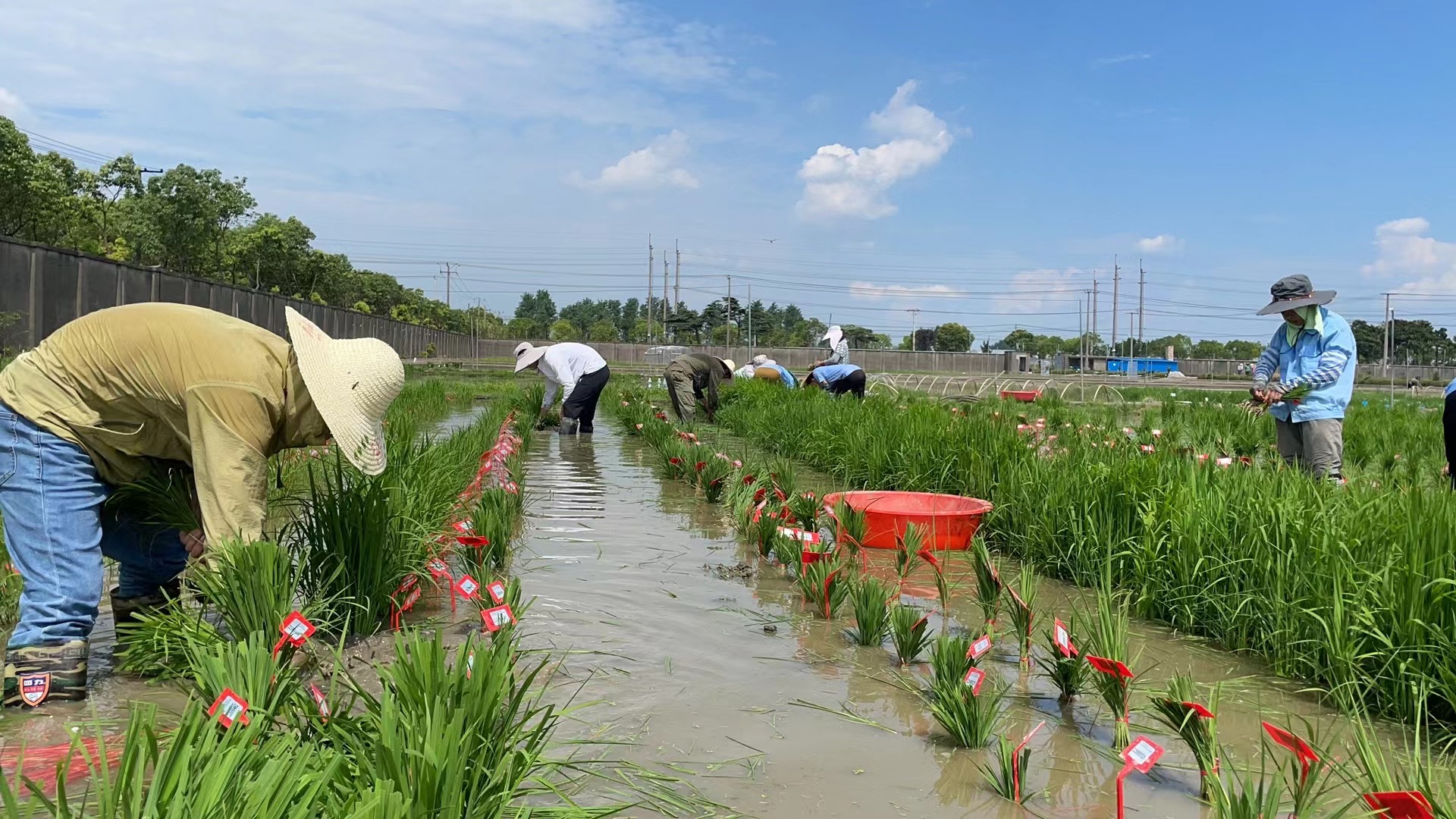

Academician He Zuhua's team from the Innovation Center for Molecular Plant Sciences at the Chinese Academy of Sciences conducting field experiments.
Just like humans, plants can get sick, "catch a cold," have "fevers," and even die. Some of these diseases are terminal and have no "cure."
Scientists are searching for "medications" for plants, especially for crops.
From 2006 to 2020, the area affected by pests and diseases in China's major grain crops reached 400 to 500 million hectares, resulting in reduced yields. To control crop pests and diseases, chemical pesticides have been used extensively, posing threats to the ecological environment and human health.
Recently, a collaborative research team from the Innovation Center for Molecular Plant Sciences at the Chinese Academy of Sciences, Fudan University, and Zhejiang University has made significant breakthroughs in the field of broad-spectrum disease resistance in crops, such as rice, in response to national major needs. This discovery is expected to provide breeding targets and biological pesticides for the green control of crop pests and diseases.

Researchers have not only identified a crucial target gene and signaling pathway related to broad-spectrum disease resistance, known as EPA, which can facilitate efficient breeding—allowing changes to a single gene to make crops like rice more resilient to various diseases—but they have also discovered a small molecule, 2'cADPR, that regulates this signaling pathway and shows promise for development as a new type of biological pesticide.
Two related research papers were published online on November 8 in the esteemed journal Science, in a "back-to-back" format.
Reviewers have commented that these findings significantly enhance our understanding of the plant immune process.
The two newly published papers both analyze the high-resolution structure of an immune complex within plants called EPA and provide insights at the atomic level on how to enhance plant disease resistance.
However, the starting points of the two research teams were different.

The first authors of the OsTIR paper celebrate their accomplishment. From left to right: Liu Jiyun, Li Kui, Lei Ziyao, Zhao Guoyan, Xu Weiying, and Wu Yue.
The researchers spent 14 years deciphering the broad-spectrum disease resistance molecular mechanisms behind the mutation phenotypes identified from 20 acres of fields. Collaborating with teams from the Innovation Center for Molecular Plant Sciences at the Chinese Academy of Sciences, Researcher Zhang Yu, Researcher Gao Mingjun from Fudan University, and Professor Deng Yiwen from Zhejiang University, they focused on rice as their primary study subject. Utilizing chemical and physical mutagenesis on a broad-spectrum disease-resistant rice material called rod1, they conducted extensive field phenotyping, resulting in the identification of 18 susceptible mutant strains. They then progressively pinpointed the EPA signaling pathway and its immune functions, and reported, for the first time, the biochemical functions of the intracellular receptor OsTIR in cereal crops. This study reveals a five-component signaling network that regulates the molecular mechanisms of plant immune homeostasis, providing an essential theoretical foundation and target genes for breeding new varieties of crops with broad-spectrum resistance to various pathogens.
PhD students Wu Yue, Xu Weiying, Lei Ziyao from the Center, Senior Engineer Liu Jiyun, Shanghai Tech University's PhD student Zhao Guoyan, and Fudan University's PhD student Li Kui are the co-first authors of the related papers.
Focusing on small molecules in the plant immune process, Researcher Wan Li's team from the Center studied the model organism Arabidopsis, which resembles a tiny grass. They found that the small molecule 2'cADPR, upon transformation, can activate the EPA immune complex, enhancing the plants' disease resistance. Moreover, 2'cADPR is relatively stable, making it suitable for development as a plant immune activator. This discovery provides a novel “bio-pesticide” that can stimulate broad-spectrum disease resistance in crops, potentially replacing chemical pesticides and reducing negative impacts on the ecological environment.

Researcher Wan Li from the Center and the first authors of the paper celebrate their success. From left to right: Xu Weiying, Yu Hua, Wan Li, and Chen Sisi.
Additionally, Wan Li's team discovered that some bacteria can also produce 2'cADPR, activating the related immune responses in plants. This reveals the molecular mechanisms of interaction between plant and bacterial immune pathways.
PhD students Yu Hua, Xu Weiying, and Chen Sisi from the Center are the co-first authors of the related papers.
On November 7, Researcher Wan Li informed The Paper that they are currently testing the effects of 2'cADPR on improving disease resistance in crops such as rice and wheat using drone spraying methods. Future transformations of these research results are anticipated.
“I believe that plants are incredibly intelligent. The long evolutionary process has enabled plants to more economically and efficiently adapt to their external environments. Some plant proteins only need to retain critical conserved domains to fulfill their vital functions. The TIR protein in rice is a typical example.” Professor Deng Yiwen expressed to The Paper, “There may be many similar phenomena awaiting our exploration, and the underlying mechanisms could be very rich.”
